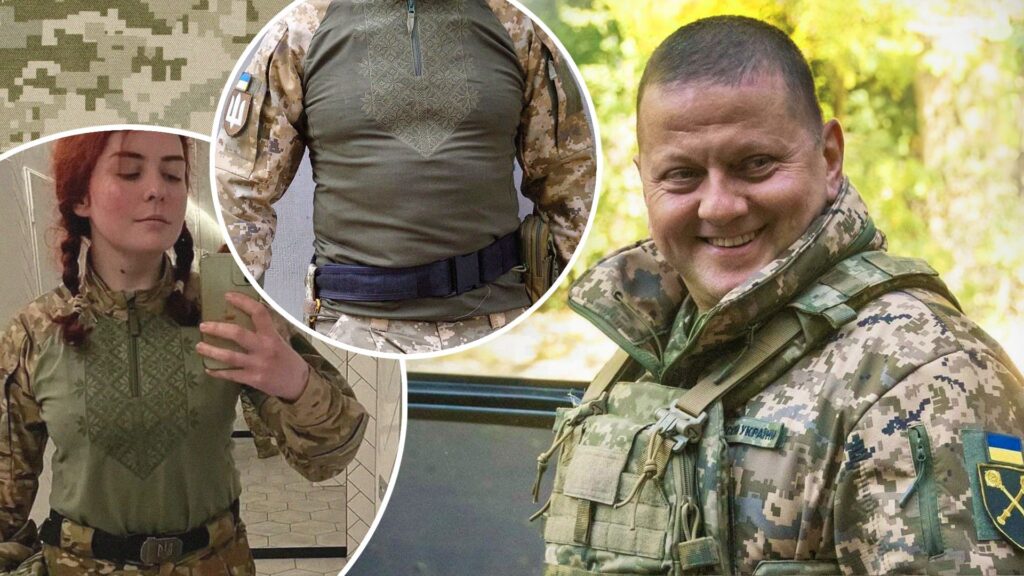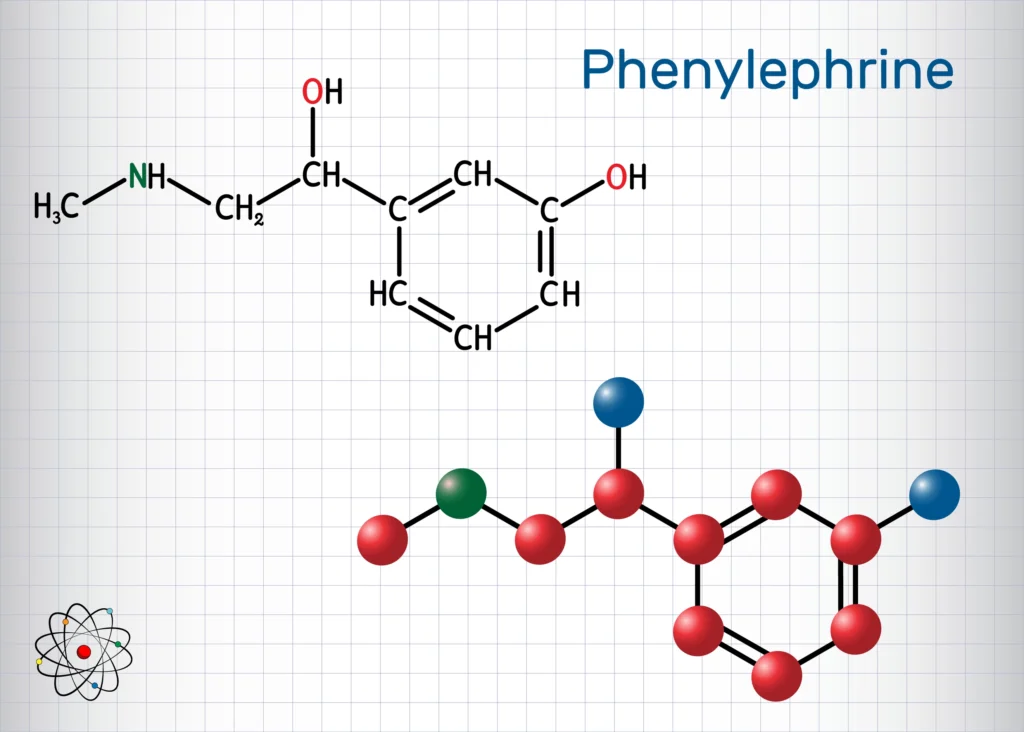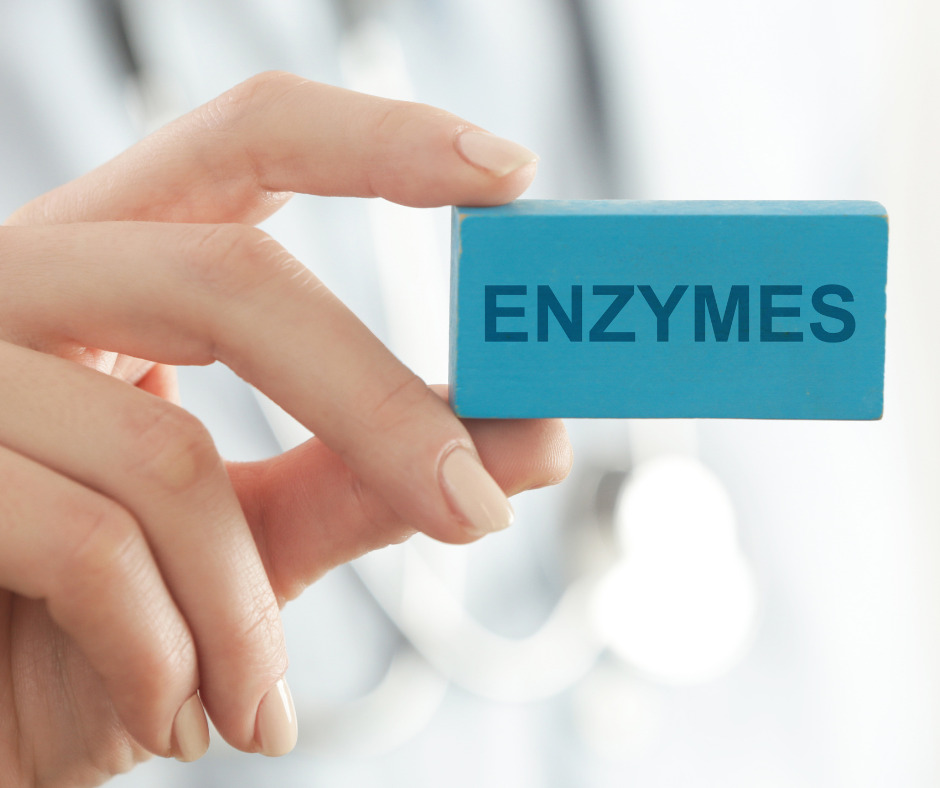-Sergiy, I read that you have a degree in pharmacy. Did you work in your field of study?
-I graduated from Kharkiv Pharmaceutical University, and I worked in my field of study for a long time. I worked in a pharmacy for a while, and then in various pharmaceutical companies in different positions.
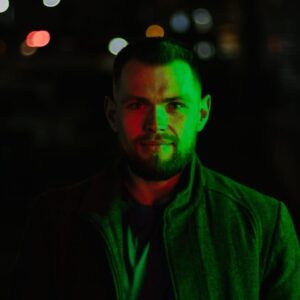
-Why pharmacy and not medicine?
-From a young age, I was interested in chemistry and medications. Also, the medical profession comes with a great deal of responsibility, while pharmacy seemed more interesting and promising to me in terms of career growth and financial stability. So, pharmacy was a very natural choice for me.
-Did you enjoy it?
-If we’re talking about working in a pharmacy, then yes, for a certain period of time. But later, I was searching for opportunities in pharmaceutical companies as a marketer.
-What were you doing when the war started?
-I was working as a product manager at the pharmaceutical company Berlin-Chemie AG. After February 24th, I joined the Territorial Defense Forces (TRO) and got involved in volunteer work, particularly in managing medications.
I remember coming to the TRO headquarters and asking how I could be useful as a pharmacist. They pointed to boxes of medicines from humanitarian aid and said they didn’t know what was inside them. There was a lot of humanitarian aid, so for about three months, it was all about sorting medications. Later, it also involved assembling medical kits for fighters going on combat missions.
-I’ve seen boxes of medicines labeled “for headaches” and others with labels like “fever reducer,” “antibiotics,” and so on.
-It’s very helpful to have someone who understands these things in organizations like TRO or volunteer groups. Most fighters had no clue about these medications. Often, the medication instructions were in English or other languages. This was an interesting challenge for me. It was also gratifying to encounter products from companies I had previously worked for. When you see different brand names for the same type of product, like Spanish or Italian versions, it’s quite exciting. It’s important when you can use your skills and knowledge to help where it’s needed.
-How did the idea for the “Vyshyv Ubaks” brand come about?
-Initially, it was purely a visual story. I was really impressed by the photos of our soldiers in tactical shirts. They looked very impressive. You look at them and think, “Wow, I want to be like this guy.”
At some point, I noticed that the collar of a tactical shirt bore a striking resemblance to the collar of a traditional embroidered shirt (vyshyvanka). I thought it would be cool to combine the two. My friend was mobilized in May 2022, and I wanted to get him a special gift. Something emotional and symbolic. But there was no product available that I could purchase. So, I tucked this idea away for a while.
Then, about a month later, I met a guy in the Carpathian Mountains who was involved in making clothing. They had switched to producing military uniforms on a larger scale. They were making them of high quality. So, I asked him if it would be possible to add embroidery to the shirts.
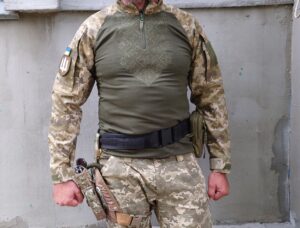
He said, “Yes, of course. We just need to calculate the cost.” We did the calculations, and I placed the first order, then shared it on social media. People reacted very positively and supported me. So, I started with a small batch, then a larger one, and then an even larger one. Now, more than a thousand people are wearing my shirts.
-That’s amazing! It seems like such ideas don’t just pop up out of nowhere.
-Nothing can stop an idea whose time has come.
-How difficult is it to create such a tactical vyshyvanka? What are the requirements for such clothing?
-If we talk about the complexity, it’s not hand-embroidery but machine embroidery. So, I can’t say that I sit up all night working on each shirt. However, what I can say is that my vyshyvankas are not just any embroidered shirts; they are part of military uniforms adorned with embroidery.
Military uniforms have many quality requirements. We adhere to all the standards and requirements of the Armed Forces. We use the same fabric that is used for making military uniforms for the Ukrainian Armed Forces. We fully comply with all the requirements and standards.
-What kind of fabric is used?
-It shouldn’t be pure cotton because it needs to meet durability requirements. Ubaks need to withstand loads, including friction and field conditions.
For the body, we use a lighter, breathable fabric, while for the sleeves, we use something sturdier. These tactical shirts were specifically designed to make it more comfortable for soldiers to wear body armor. And we adhere to all these requirements.
-Who are your main customers?
-The main customers are military personnel, their family members, and friends. If we talk about segmentation, it’s primarily military personnel who want to emphasize their identity. They want to be more than just soldiers; they want to be soldiers continuing the legacy of the Cossacks, the Ukrainian Insurgent Army (UPA), and the warriors of the early days of liberation struggles. For them, it’s a symbol of resistance.
The second category includes close relatives who want to give a gift to their servicemen. Because basic supplies are provided, no matter what they say. But gift-giving can be challenging. People often ask, “What can I give you?” and receive the answer, “I have everything I need.” In such cases, you need to give emotions. “Vyshyv Ubaks” offers precisely that – national identity, a sense of belonging, and an understanding of what we’re fighting for.
When I started thinking about this, I realized that, in fact, hundreds of thousands of people who have never been in the military are now wearing this uniform. They wear it to protect our right to be Ukrainians. Russians destroy everything Ukrainian in the territories they enter. They destroy books, they destroy everything that reminds people of Ukraine. What can be a brighter symbol of the nation than the vyshyvanka? It’s a combination of a uniform and a symbol of what we are willing to fight for.

-As you speak, I’m getting goosebumps.
-The embroidery is a symbol of what we are fighting for. I’m very pleased that people appreciate it. People often buy them for weddings and holidays. From the first batch, I gave some to my friends. I tell customers that maybe it’s better to wear them as ceremonial attire because the embroidery may not feel very comfortable under body armor. But they insist it’s a talisman.
-Is the pattern a random combination, or did you intend any meaning?
-Actually, it’s embroidery, popular in all regions of Ukraine. The symbols on the vyshyvanka carry meaning, but let’s be honest, not everyone knows what each pattern signifies. We love the vyshyvanka because it’s symbolic and uniquely Ukrainian. Nowadays, there are many designer vyshyvankas, but when you look at them, you can tell they are hand-embroidered, yet they lack authenticity. Our vyshyvankas have that authenticity, and it brings me great joy.
-I’ve seen tactical vyshyvankas on some well-known individuals. How do they get them?
-There are military figures who are moral authorities for me. For example, Kateryna Polishchuk, known as “Ptashka.” I remember her video at Azovstal where she sings. It was a very powerful moment. You hear songs that were sung by UPA soldiers in bunkers 70 years ago, coming from a girl in the Azovstal bunkers. It’s about continuing our fight with our enemy, which has been going on for over a century.
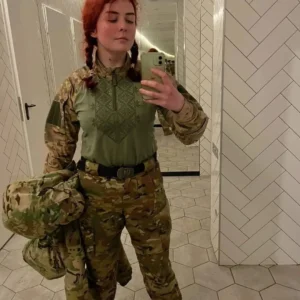
I wanted to show my respect and gratitude by gifting her one of our shirts. What else can I do for someone like Kateryna? How else can I express my admiration?
I gathered the courage and messaged her on Instagram: “Mrs. Kateryna, I make these shirts with a specific concept. If it resonates with you, I’d be happy to gift one.” She liked the idea. She wrote to me, suggesting it could be an element of the ceremonial uniform. I was very pleased that people like her appreciate my ideas.
-What are your plans for the future?
-That’s the toughest question. Honestly, it’s hard to say anything about plans. I take it day by day, gradually doing my work. There are no specific plans or projects, but there is a dream. I would like to see soldiers wearing my “Vyshyv ubeks” at the Victory Parade. And I really hope it happens as soon as possible.
-Do you plan to return to farming?
-Not for now. I worked in farming from 2014 to 2022. During that time, I realized that I’m interested in developing myself as a marketer, and the pharmaceutical industry is highly regulated. I’m interested in pursuing something of my own.
